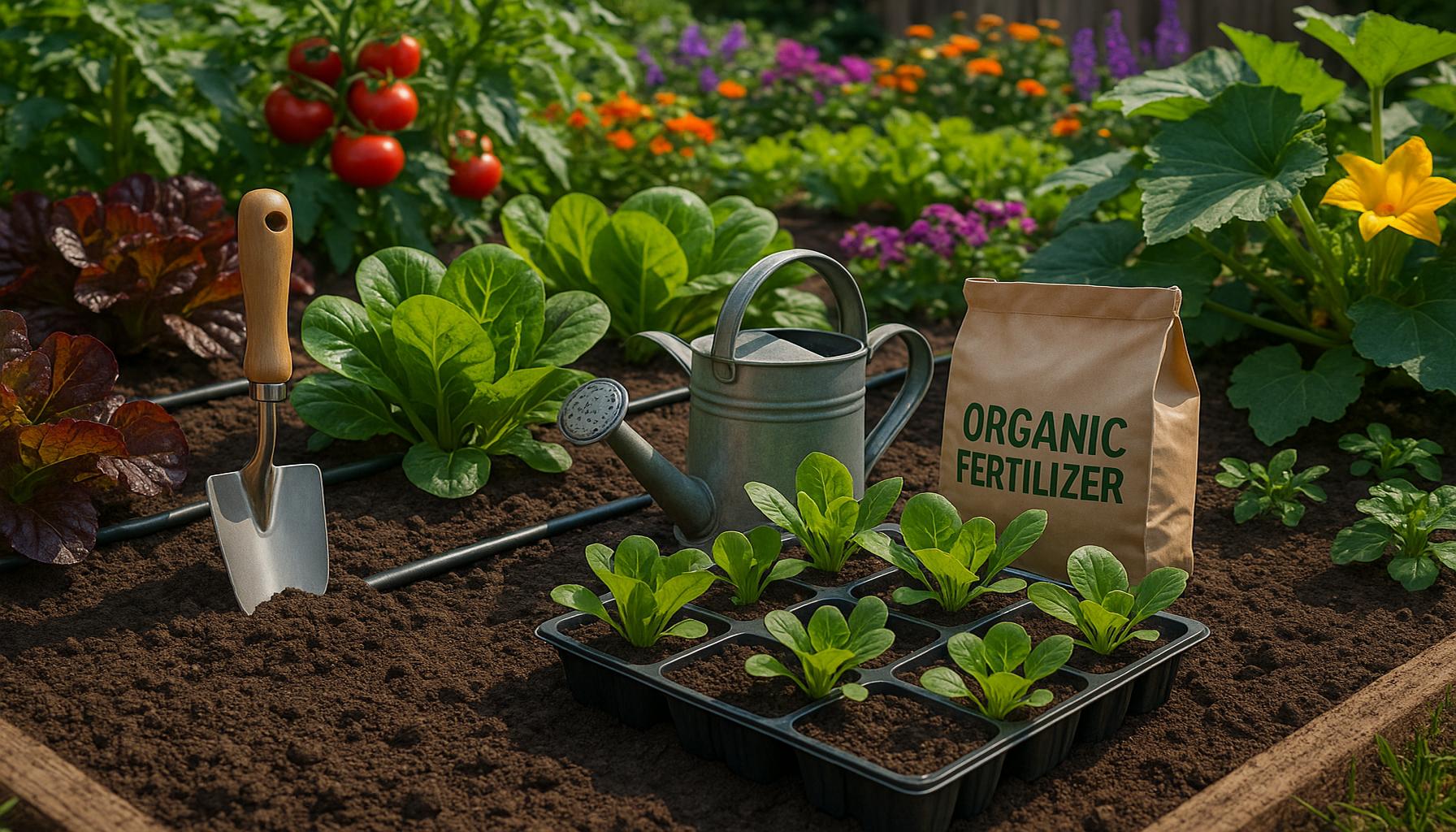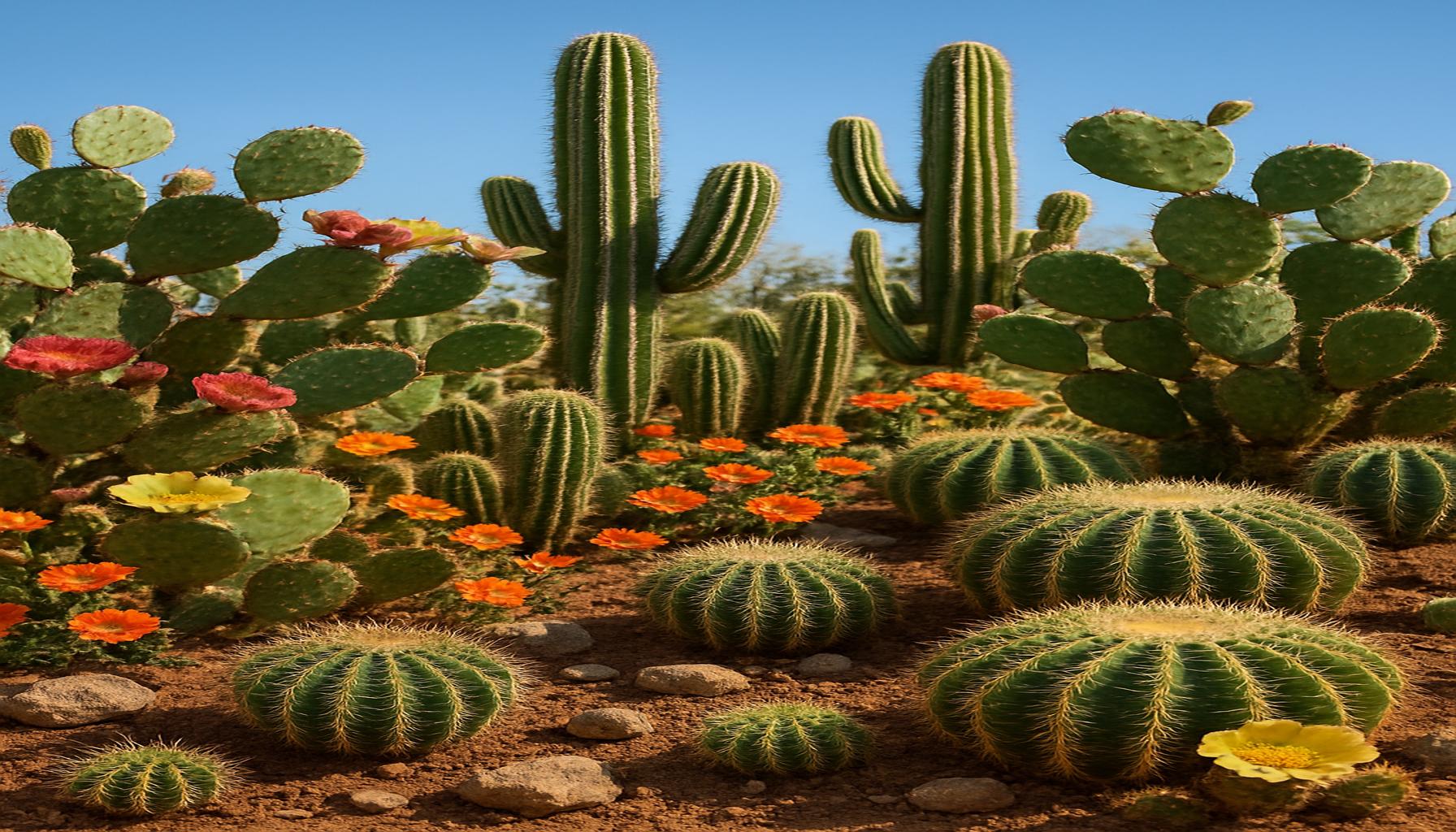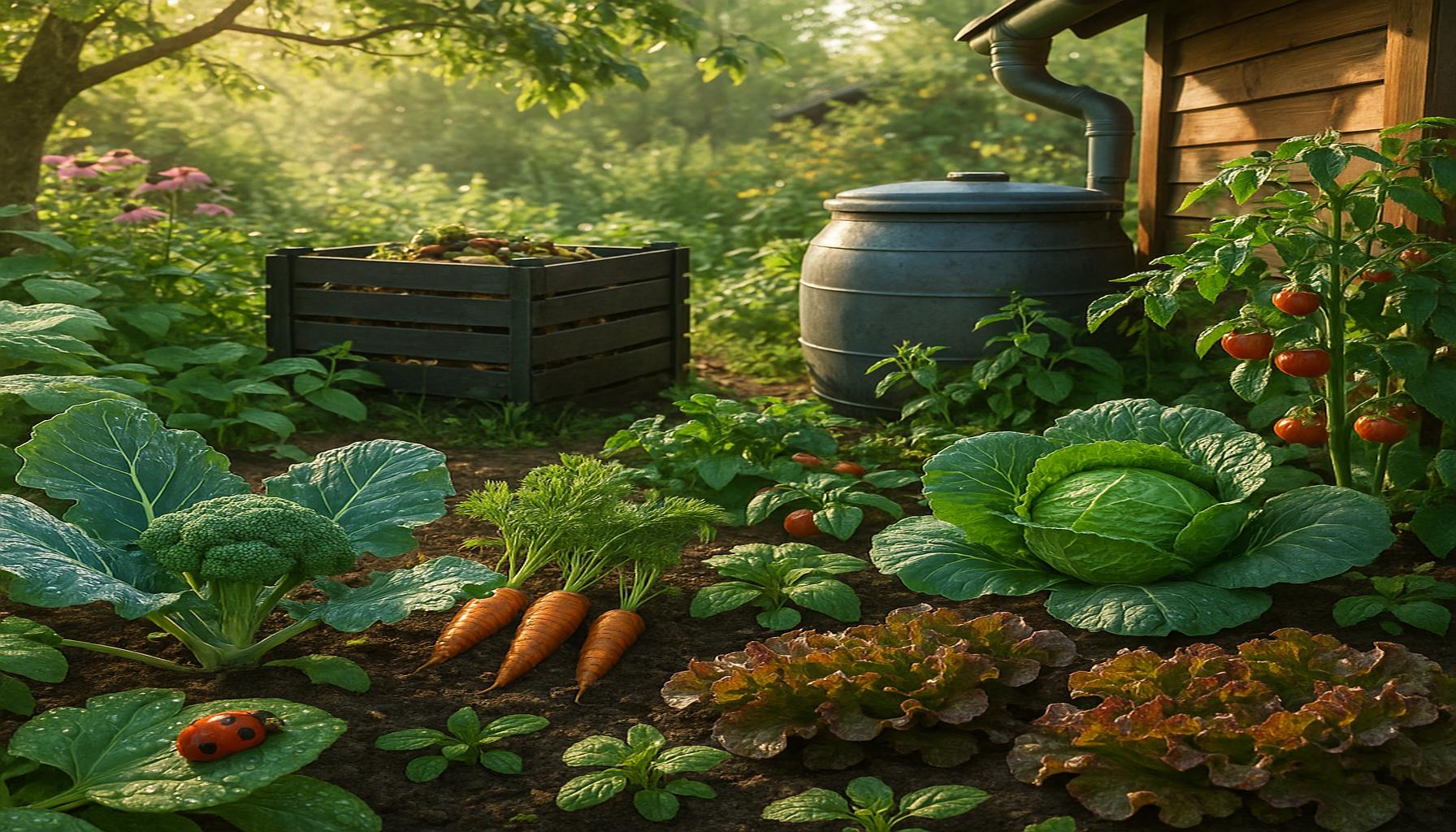High-Performance Gardening: Techniques to Maximize Plant Growth

As the world grows increasingly aware of environmental challenges, the interest in gardening techniques that are both sustainable and efficient is surging. High-performance gardening has emerged as a powerful solution, enabling gardeners to maximize their efforts while fostering healthier ecosystems. This approach emphasizes not just innovative growing practices, but also the potential of turning any garden into a robust and productive landscape.
Why High-Performance Gardening?
The focus of high-performance gardening is on optimizing every aspect of plant cultivation. It combines traditional wisdom with modern techniques to create thriving gardens. Here are some core benefits:
- Increased Yield: By addressing the specific needs of plants and ensuring they receive optimal conditions, gardeners can grow more food in limited spaces. For example, community gardens in urban areas often implement high-performance gardening techniques to supply fresh produce to local families.
- Sustainability: High-performance gardening practices promote resource conservation. By using techniques like rainwater harvesting and drip irrigation, gardeners reduce water consumption while maintaining plant health. Many farmers have reported a significant decrease in their water bills after adopting these methods.
- Enhanced Resilience: With the integration of diverse plant species and natural pest repellents through companion planting, plants can become more resistant to pests and diseases. For instance, intercropping carrots and onions can deter carrot flies, offering a natural solution to common garden pests.
Key Techniques to Explore
Diving into the realm of advanced gardening offers various strategies to enhance productivity. Here are some powerful techniques to consider:
- Soil Health: The foundation of a successful garden lies in nutrient-rich soil. By incorporating compost and organic matter such as leaves, grass clippings, or kitchen scraps, gardeners can improve soil fertility. Research has shown that healthy soil not only fosters robust plant growth but also supports beneficial microorganisms that enhance plant health.
- Companion Planting: By understanding the relationships between different plants, gardeners can enhance growth and deter harmful pests. For example, marigolds are known to repel nematodes, a common garden pest, making them excellent companions for tomatoes.
- Vertical Gardening: This innovative practice maximizes space efficiently, particularly in urban settings. Structures such as trellises, wall planters, and hanging pots allow for the cultivation of a variety of plants vertically, effectively increasing the yield of available garden area.
By integrating these methods into your gardening practices, you can create a flourishing garden that not only serves your needs but also aligns with the overarching goal of environmental stewardship. Embrace the journey of uncovering the full potential of your green space, and you may inspire others to follow suit in their gardening endeavors.
DISCOVER MORE: Click here to learn about the therapeutic benefits of writing
Unleashing the Potential of Your Garden
High-performance gardening is not just about growing plants; it’s about cultivating an efficient ecosystem that maximizes growth while minimizing waste. To truly benefit from these innovative techniques, understanding the fundamental components of a thriving garden is essential. Each technique plays a pivotal role in ensuring your plants reach their full potential and your garden flourishes.
Soil Health: A Thriving Foundation
Soil health is the cornerstone of successful gardening. Healthy soil acts as a living entity, packed with microorganisms and nutrients crucial for plant growth. To achieve optimal soil health, consider the following practices:
- Regular Composting: Incorporating organic materials like kitchen scraps, grass clippings, and shredded leaves transforms your garden waste into nutrient-rich compost. This compost not only enriches the soil but also improves its structure, leading to better water retention and aeration.
- Mulching: Applying a layer of organic mulch helps regulate soil temperature, retain moisture, and suppress weed growth. Utilizing garden waste, such as straw or bark chips, can create a sustainable cycle of nutrients.
- Soil Testing: Conducting soil tests allows you to identify nutrient deficiencies and pH levels, enabling you to amend the soil accordingly. This data-driven approach ensures your plants have access to the right nutrients, enhancing growth and yield.
Companion Planting: Nature’s Allies
Another effective strategy in high-performance gardening is companion planting. This technique capitalizes on the natural relationships between different plants, fostering healthier growth and pest management. For instance:
- Tomatoes and Basil: These two plants not only thrive together but also enhance each other’s flavor and growth. Basil repels pests that typically harm tomatoes, creating a mutually beneficial environment.
- Carrots and Onions: This duo works wonders as onions deter pests like carrot flies, while carrots can help aerate and soften the soil around onion roots, allowing for easier growth.
- Beans and Corn: Known as the “Three Sisters” when paired with squash, beans climb the corn stalks for support, while their nitrogen-fixing abilities enrich the soil for all three crops.
Maximizing Space with Vertical Gardening
In urban landscapes where garden space is often limited, vertical gardening presents a creative solution. By using trellises, wall planters, and hanging pots, gardeners can maximize the usable area of their gardens while cultivating a broader range of plants. Vertical gardens can yield impressive results, producing fruits and vegetables that may otherwise require expansive ground space. Additionally, vertical gardening can improve air circulation, reducing the likelihood of disease and improving overall plant health.
By adopting these high-performance gardening techniques, you can not only create a more productive garden but also contribute to environmental sustainability. The benefits extend beyond your plot, helping to foster a more resilient ecological system while ensuring that your gardening efforts yield exceptional results.
| Technique | Benefits |
|---|---|
| Soil Optimization | Enhances nutrient availability and root development, leading to stronger plants. |
| Companion Planting | Promotes natural pest control and maximizes space efficiency, resulting in higher yields. |
In the realm of high-performance gardening, soil optimization is paramount. By ensuring that your soil is rich in organic matter and well-aerated, you create a flourishing environment that promotes nutrient uptake and robust root growth. Use compost and natural fertilizers to revitalize your soil, which greatly improves plant health and resilience. Another advantageous technique is companion planting. This method involves growing specific plants together to foster beneficial interactions. For instance, planting marigolds alongside vegetables acts as a natural deterrent for pests, while simultaneously enhancing biodiversity in your garden. This not only maximizes yields but also allows for efficient use of space, as different plants often have varying rooting depths, resulting in a more productive garden plot. With these techniques, gardeners can significantly enhance their plant growth results and enjoy the benefits of a thriving garden ecosystem. Discovering more about these strategies will unlock the full potential of your gardening efforts.
DISCOVER MORE: Click here to dive into the art of storytelling
Integrating Advanced Techniques for Optimal Growth
As we delve deeper into the realm of high-performance gardening, several advanced techniques emerge that can further enhance plant growth and yield. These innovative approaches cater to both novice and experienced gardeners, providing insights into how to foster an environment where plants can thrive unhindered.
Hydroponics: Soil-Free Success
One of the most exciting advancements in gardening is hydroponics, a method that allows plants to grow without soil by using mineral nutrient solutions in water. This technique is particularly effective for urban gardeners with limited space and can yield results much quicker than traditional gardening. Key benefits include:
- Faster Growth Rate: Plants in hydroponic systems can grow up to 50% faster than those grown in soil due to more direct access to nutrients and optimal growing conditions.
- Space-Saving: Vertical hydroponic systems can be stacked or arranged compactly in any available space, making it suitable for balconies and small backyards.
- Reduced Pest and Disease Pressure: The controlled environment of hydroponics diminishes the need for pesticides, offering a cleaner and more sustainable approach to growing fruits and vegetables.
Intensive Planting: Maximizing Yield Per Square Foot
Intensive planting is another strategy that seeks to increase crop yield by planting more densely than you would in traditional rows. This method not only optimizes space but also helps in creating a microclimate that can benefit all plants involved. Here’s how to make the most of intensive planting:
- Succession Planting: This involves planting crops sequentially throughout the season. For instance, after harvesting radishes, you can quickly sow lettuce in the same space, maximizing productivity.
- Intercropping: By planting fast-growing crops alongside slower ones (like radishes with broccoli), you can ensure that every inch of soil is utilized effectively, aiding in both nutrient retention and pest control.
- Using Successional Crop Rotations: Rotating your crops on a regular basis helps to mitigate soil depletion and reduces the likelihood of pests and diseases settling in.
Water Management: Precision Irrigation Techniques
Another critical element of high-performance gardening is effective water management. Proper irrigation methods can greatly enhance plant growth while conserving water—a crucial resource for gardeners. Consider implementing these techniques:
- Drip Irrigation: This method delivers water directly to the plant roots with minimal evaporation and runoff. It’s particularly efficient and can be easily automated, ensuring your plants receive consistent moisture.
- Rainwater Harvesting: Collecting rainwater not only conserves resources but also provides plants with chemical-free water, ideal for various types of horticulture.
- Soil Moisture Sensors: Incorporating technology such as soil moisture sensors can inform gardeners when to irrigate, preventing overwatering and underwatering.
Utilizing Companion Animals: Natural Pest Management
Pest control can often challenge high-performance gardeners, but integrating companion animals—like chickens or ducks—can create a natural biocontrol system. These animals consume pests and insects, reducing reliance on chemical pesticides. They also provide nutrient-rich manure, boosting soil health. With strategies such as providing shelter for these animals, you can create a synergistic relationship that promotes overall garden health.
By embracing these advanced techniques in your high-performance gardening efforts, you can ensure not only a bountiful harvest but also a more sustainable and resilient gardening ecosystem. Whether through hydroponics, intensive planting, or effective water management, there are endless possibilities for maximizing plant growth and making the most of your gardening space.
DISCOVER MORE: Click here for helpful gardening tips
Conclusion: Embracing the Future of Gardening
In the ever-evolving world of gardening, high-performance gardening represents a dynamic shift towards maximizing plant growth while prioritizing sustainability. By integrating advanced techniques such as hydroponics, intensive planting, effective water management, and the use of companion animals for pest control, gardeners can unlock a multitude of benefits that enhance productivity and foster a thriving ecosystem.
As we’ve explored, methods like hydroponics not only save space but also significantly accelerate growth rates, positioning them as a game-changer for urban gardeners. Additionally, intensive planting strategies encourage a smarter approach to crop cultivation, ensuring optimal use of available space and resources throughout the growing season. Incorporating precision water management techniques can conserve this precious resource while promoting healthier plants. Furthermore, the integration of companion animals presents a holistic approach to pest management, contributing to overall garden vitality.
Ultimately, the future of gardening lies in our ability to adapt and incorporate these innovative practices, and to view our gardens as a symbiotic ecosystem where every element plays a vital role. Whether you are a seasoned expert or just starting your gardening journey, these high-performance techniques provide a pathway to not only achieve abundant harvests but also contribute positively to the environment. The world of high-performance gardening is brimming with potential, inviting all gardeners to explore, experiment, and evolve in their pursuit of greener landscapes.


